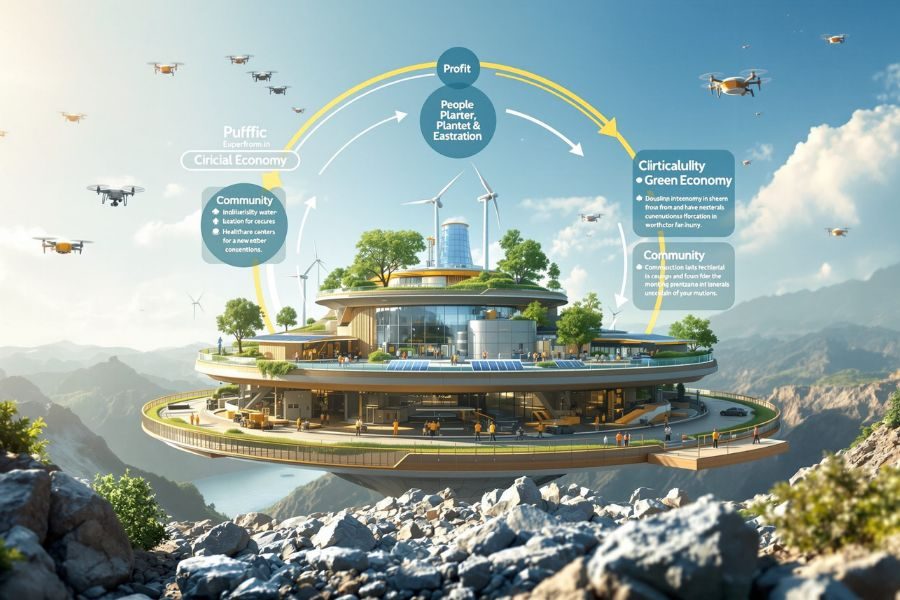Mining sustainability is shifting from a narrow carbon focus to a whole-system agenda covering economics, environment, social outcomes and governance. Pressures include export controls, resource nationalism, supply-chain fragmentation and geopolitical risk—alongside rising demands for real transformation.
By John Zadeh – Discovery Alert
What “good” now looks like
- Balance people, planet and profit: long-term profitability, lower impacts and community value.
- Go circular: water reuse, waste reduction, land rehabilitation and by-product repurposing.
- Use tech where it matters: automation, renewables, real-time monitoring and predictive maintenance.
Policy is catching up
- Draft reforms aim to separate mineral vs petroleum oversight, tighten action against illegal mining, promote exploration and beneficiation, and speed approvals without lowering standards—seeking regulatory certainty and investor confidence.
Critical minerals are centre stage
- Battery metals, rare earths, copper, aluminium and PGMs are pivotal to clean-energy supply chains. Southern Africa’s endowment—and push for local processing—positions the region to capture more value at home.
Communities aren’t side projects
- Social licence now hinges on genuine partnership, not transactional CSR. Where municipalities struggle, mines often fill service gaps (water, health, education), but that creates dependency unless wider institutions are part of the plan.
Skills and beneficiation
- Universities are adding sustainable mining, hydrogen and just-transition programmes, while industry partnerships build a future-ready workforce. Beneficiation and regional processing hubs can shift economies from extraction to manufacturing.
Finance follows performance
- Sovereign wealth funds, sustainability-linked finance and stronger ESG disclosure are steering capital to operators that deliver measurable social and environmental outcomes, not PR.
The horizon
- By 2050 the sector’s leaders see broader beneficiation, inclusive ownership, low-impact operations and skilled, tech-enabled workforces—measured by social return, resilience and community wellbeing, not tonnage alone.




